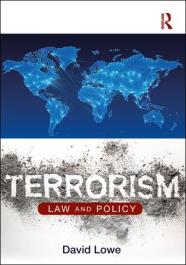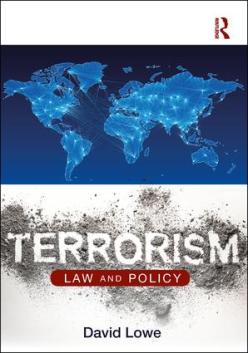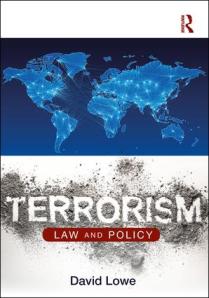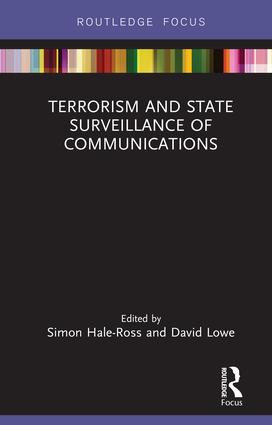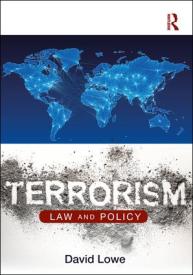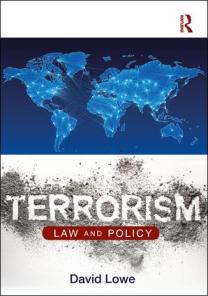Introduction
Following the death of an African-American by a white police officer in Minneapolis in the US, we are witnessing global protests related to ‘Black Lives Matter’. Sadly, this is not the first time that we have witnessed the death of African-Americans at the hand of White police officers in the US. This raises the question of what can the US federal government do to tackle this. Among issues related to police reform, which is easier said than done as policing in the US cannot be compared to the UK as in the US you have state police, city police, local police, sheriff departments all with differing levels of accountability and, as we have seen it the US on many occasion, individual states do not like to see the federal government ‘interfere’ with the running of that state. However, the federal government can two things, one is amending its hate crime legislation and the process in designating certain domestic groups as terrorist organisations, including the extreme far-right, white supremacist groups. This blog is quite lengthy but will take you through a comparative study between the UK and the US in relation to freedom of expression, hate crime and designating groups as terrorist organisations. This is based on my current research that I am writing up.
Right to Freedom of Expression
In a liberal democracy the right to freedom of expression is a vital human right that differentiates it from an authoritarian regime and, as such, most liberal democracies have some form of legislative provision protecting that right from being incrementally eroded by the state. These can come in the form of being enshrined in a state’s written constitution, a bill of rights, a convention, a charter or through a statute allowing the judiciary to assess if an executive government’s legislation is compatible with human rights provisions. In the UK Article10(1) European Convention on Human Rights provides this right where everyone has the right to freedom of expression that includes freedom to hold opinions and to receive and impart information and ideas without interference by a public authority and regardless of frontiers. However, this is a qualified right and under certain strict conditions the state and its agencies can interfere with this right provided it is in accordance with the law and is necessary in a democratic society when it is in the interests of:
1. national security;
2. territorial integrity or public safety;
3. for the protection of the reputation or rights of others;
4. for maintaining the authority and impartiality of the judiciary;
5. for the prevention of disorder or crime, for the protection of health or morals; or,
6. for the protection of the rights and freedoms of others.
The first amendment of the US Bill of Rights protects freedom of expression stating that Congress shall make no law that abridges the freedom of speech, or that of the press.
Judicial Interpretation of Right to Freedom of Expression
To put some context into what is legally acceptable in relation to freedom of expression, in the UK case Redmond-Bate v Director of Public Prosecutions (1999) Lord Justice Sedley said:
‘Freedom of speech includes not only the inoffensive but the irritating, the contentious, the eccentric, the heretical, the unwelcome and the provocative, provided it does not tend to provoke violence. Freedom only to speak inoffensively is not worth having. [My emphasis]
Important in this decision is that freedom of speech does not provoke violence and the European Court of Human Rights (ECtHR) has adopted a similar approach. In Erbaken v Turkey (2006) the ECtHR has tempered freedom of expression saying that tolerance and respect for the equal dignity of all human beings constitute the foundation of a democratic, pluralistic society, adding:
‘That being so, as a matter of principle it may be considered necessary in certain democratic societies to sanction or even prevent all forms of expression which spread, incite, promote or justify hatred based on intolerance …’
In Texas v Johnson (1989) the US Supreme Court examined if burning the US flag breached the first amendment right of freedom of expression. The Court rejected the argument that Johnson’s conviction could be sustained on the ground that he had failed to show the respect for the US’ national symbol which may properly be demanded of every US citizen. The Court concluded that freedom of expression guarantees freedom to be intellectually diverse or even contrary and the right to differ as to things that touch the heart of the existing order, adding that encompassing the freedom to express publicly one’s opinions about the US flag, included those opinions which are defiant or contemptuous. US courts have delivered decisions where the first amendment protection of freedom of expression does not apply. These include defamation where the US Supreme Court held defamation is not protected under the first amendment where malicious, scandalous and defamatory statements are published and malice may be inferred in the publication of the statement. Another category of speech includes insulting or fighting words that the US Supreme Court held are not protected by the first amendment as they do not contribute to the expression of ideas nor do they possess social value in the search for truth. The court saw such terms as those which by their very utterance inflict injury or tend to incite an immediate breach of the peace. It has also been held that sedition where statements preparing revolution to overthrow and destroy the US government by force and violence are not protected by the first amendment. In Brandenburg the US Supreme Court laid down tighter parameters as to when seditious statements are not protected under the first amendment, holding that inflammatory speech is protected unless such speech is directed to inciting or producing imminent lawless action and is likely to incite or produce such action.
From these examples we see the legal boundaries setting out what is acceptable under freedom of expression is wide. The judiciary in all both jurisdictions allow offensive, heretical, extremist views under the legal protection of freedom of expression and only when those views promote violence, incite lawless action or promotes or justifies hatred based on intolerance are those boundaries crossed and no longer protected under this right.
When Right Wing Narratives and Statements go From Being Offensive to Hate Crime
Hate Crime: UK
In the UK hate crimes come under Part III of the Public Order Act 1986, creating the offences of:
1. Using threatening, abusive or insulting words or behaviour or displays written material which is threatening, abusive or insulting with the intent of stirring up racial hatred or having regards to the circumstances racial hatred is likely to be stirred up;
2. Publishing or distributing material that is threatening, abusive or insulting with the intent to stir up racial hatred or having regards to the circumstances racial hatred is likely to be stirred up.
Racial hatred is defined as , ‘…hatred against a group of persons defined by reference to colour, race, nationality (including citizenship) or ethnic or national origins’. Part 3A of the Act introduced offences based on the grounds of religious hatred and hatred on the ground of sexual orientation. Under the Act religious hatred means hatred by reference to religious belief or absence of religious belief, with hatred on the grounds of sexual orientation meaning hatred by reference to sexual orientation be it towards persons of the same sex, the opposite sex or both. In 2018/19 103,319 hate crimes were recorded by the police in England and Wales with 78,991 for race hate crime, 8,566 for religious hate crime, 14,491 for sexual orientation hate crime, 2,333 for transgender hate crime and 18, 256 for disability hate crime, with half of those offences being public order offences and a third for violence against the person.
Hate Crime: US
Following the assassination of Martin Luther King on the 4th April, 1968 in Memphis, Tennessee, the US government introduced the Civil Rights Act 1968 creating the federal crime of wilfully injuring, intimidating or interfering with, or attempts to injure, intimidate or interfere with any person because of his race, colour, religion or national origin. The Hate Crimes Prevention Act 2009 introduced during the Obama presidency expanded existing 1968 Act to apply to crimes motivated by a victim’s actual or perceived gender, sexual orientation, gender identity, or disability, and dropped the prerequisite that the victim be engaging in a federally protected activity. The Act covers a wide array of activity. This ranges from aiming to prevent US states introducing law and customs resulting in persons being deprived of their constitutional rights on account of their colour or race, preventing disqualification of jurors due to race or colour and directly or indirectly depriving persons of employment, position, work, compensation or other benefit on account of their political affiliation, race, colour, sex, religion or national origin. The Act contains specific offences including intentional damage to religious property and intentional obstruction of persons in the free exercise of their religious beliefs. Under section 249 of the Act it is an offence to cause or attempt to cause bodily injury to a person because of that person’s race, colour, religion or national origin or because of their gender, sexual orientation, gender identity or disability. However, bodily injury does not include emotional or psychological harm to the victim.
There have been a number of convictions under the 2009 Act. Examples include US v Paul Beebe et.al where the three defendants wilfully caused bodily injury on a disabled young adult Navajo man. A self-proclaimed white supremacist, Beebe’s apartment was adorned with Nazi swastikas and other Nazi paraphernalia. The defendants shaved a swastika into the hair at the back of the victim’s head, writing ‘KKK’ and ‘White Power’ in the lines of the shaved swastika. The defendants also heated wire hangers and seared a swastika in the victim’s right bicep. The defendants argued that section 249(1) was unconstitutional and the federal government exceeded their powers in legislating under the thirteenth amendment that states neither slavery nor involuntary servitude, except as a punishment for crime whereof the party shall have been duly convicted, shall exist within the United States, or any place subject to their jurisdiction.
The US District Court for the District of New Mexico followed the US Supreme Court decision in US v Flores that upheld the constitutionality of section 249(1) under the thirteenth amendment. In US v Frankie Maybee, among other charges, Maybee was charged with five counts of committing federal hate crime under section 249(1). With his co-defendant, Maybee conspired to cause bodily injury to five Hispanic males because of their national origin. Maybee chased the males in his truck, repeatedly striking the Hispanic Males’ car causing it to crash and burst into flames, injuring the five men. Maybee also used the argument that under the thirteenth amendment section 249(1) was unconstitutional. Once again, this argument was dismissed by the US District Court Western District of Arkansas relying on earlier US Supreme Court decisions. In 2017 Joshua Vallum was the first person convicted under section 249(2) of the Act for targeting a transgender victim. He received a 49-year prison sentence for murdering a 17-year-old transgender woman he dated and later killed on finding out she was transgender. The conviction led to the US Attorney General saying, ‘The Justice Department will continue its efforts to vindicate rights of those individuals who are affected by bias motivated crimes.’
The Disparity Between the UK and the US’ Hate Crime Law
While it is laudable and a positive step that US hate crime legislation has resulted in convictions, it is questionable if the US justice department is truly continuing its efforts to protect individuals affected by bias motivated crime due to section 249 Hate Crimes Prevention Act relating solely to bodily injury and not including emotional or psychological harm to a victim. The issue of cross burning has been questioned in US courts if such practice amounts to hate speech under the first amendment. The burning of a cross is a form of expression that has been associated with hatred and prejudice towards the US’ Afro-American black community. Cross burning was originated at the end of the US 1861-1865 Civil War when Confederate guerrilla groups and the Ku Klux Klan (KKK) used it as a symbol of racial supremacy to terrorise newly freed black slaves. It was also used by the KKK throughout the 1920’s when the lynching of black people was commonplace. In the US, particularly in the southern states, cross burning has been used as a warning and a threat to any person seeking to improve the political or economic condition of black persons. There is no doubt such practice and behaviour is designed to cause harassment, alarm and distress towards the intended victim, or in the words of section 249(c)(1) would cause emotional or psychological harm in that victim. As such, cross burning should be treated as a hate crime, but paradoxically this practice is seen as an expression protected under the first amendment.
As a result, even though some US states and provinces have tried to legislate against cross burning, the legislation was held as unconstitutional (and consequently unlawful) by the US Supreme Court, which is seen in the following cases. In R.A.V. v City of St. Paul (1992) the defendant burned a cross in the fenced yard of a black family who lived across the street where the defendant was living. Convicted of disorderly conduct under an ordinance issued by the City of St. Paul, the defendant claimed the ordinance was unconstitutional under the first amendment and the cross burning was no more than an expression. The Supreme Court found that the ordinance was unconstitutional under the first amendment because it singled out display of swastikas and cross burning that amounted to a right-wing expression of hatred. Also, the Court saw a problem with the ordinance as it punished persons who knew their actions would amount to alarm or resentment and, as the defendant did not utter a threat or incite violence, the defendant’s actions came under the protection of expression under the first amendment.
In Virginia v Black (2003) that came before the US Supreme Court in 2003, the case contained two separate occurrences of cross burning. The first was Barry Black, who was Virginia’s KKK leader. He burned a cross at a KKK rally in a field on private property belonging to a person sympathetic to the KKK. The second occurrence was Elliott and O’Mara who burned a cross on a black neighbour’s property because the neighbour made complaints to Elliott’ mother about the two of them shooting guns for target practice in their back yard. Both were convicted under a Virginia state law of burning crosses with the intent to intimidate a person or group of persons, where under the statue, the burning of a cross is prima facie evidence of an intent to intimidate a person or group of persons. In relation to Black, the Court disapproved of the section that burning a cross is prima facie evidence of intent stating that cross burning may mean a person is engaging in constitutionally prescribable intimidation, but it is also seen as core political speech under the first amendment. As such the Court found in Black’s favour. In relation to Elliott and O’Mara the Court held that in burning a cross it has to be proved the defendants intended to intimidate people and if the section that cross burning was prima facie evidence of intent, then the Virginia law would be unconstitutional. As such the Supreme Court returned the case to the Virginia State Court for the retrial of the two men regarding the issue of proving intent. If these were UK cases all the defendants would have been convicted of hate crime.
The UK’s the Anti-Terrorism, Crime and Security Act 2001 amended the Crime and Disorder Act 1998 by introducing racially or religiously aggravated offences. This includes assault and criminal damage, but importantly, it also includes public order and harassment offences. In relation to public order offences is includes racial or religious aggravated disorderly behaviour. In relation to this offence the offender only has to use threatening words or behaviour or disorderly behaviour within the hearing or sight of the victim causing harassment, alarm or distress and it may be committed in public or private. In relation to harassment it covers the offences of harassment and stalking causing alarm or distress and putting a person in fear of violence where the stalking involves fear of violence or serious alarm or distress. In both of these offences no physical assault or to use the words of section 249 of the US’ Hate Crime Prevention Act 2009, no bodily injury is required, only the equivalent of emotional or psychological harm has to be proved under the UK legislation which is alarm, harassment or distress.
Proscribing Extreme Far-Right Groups as Terrorist Organisations
In December 2016 the UK was the first western state to proscribe extreme far-right neo-Nazi groups as terrorist organisations, initially with the group National Action. The groups Scottish Dawn and NS131, which morphed out of National Action, have also been proscribed because their views were seen as exceeding the acceptable parameters of freedom of expression by glorifying and promoting violence. In February 2020 two further extreme far-right groups were proscribed, System Resistance Network (which is spin-off from National Action) and Sonnenkreig Division (that is linked to the US group Atomwaffen). Under section 3 Terrorism Act 2000 the Home Secretary has the authority to proscribe groups as terrorist organisations if that group is concerned in terrorism. Being concerned in terrorism includes if the group:
(a) commits or participates in acts of terrorism;
(b) prepares for terrorism;
(c) promotes or encourages terrorism; or
(d) is otherwise concerned in terrorism.
In relation to promoting or encouraging terrorism, it includes the glorification of the commission or preparation of terrorist acts. For glorification of conduct it is unlawful if persons who become aware of a group’s glorification of terrorist acts as conduct that they should emulate. Under the Terrorism Act 2000 the term ‘glorification’ includes any form of praise or celebration. In determining actions that amount to acts of terrorism, underpinning section is the UK’s legal definition of terrorism which in essence requires the use or threat of action designed to influence a government or an international governmental organisation or to intimidate the public or a section of the public where the action is for the purpose of advancing a political, religious, racial or ideological cause. The action must:
1. Involve serious violence against a person; or
2. Involve serious damage; or
3. Endangers a person’s life (other than the person committing the action); or
4. Creates a serious risk to the health or safety of the public or a section fo the public
The action is not limited to action carried out in the UK, but also includes action outside the UK.
Regarding extreme far-right groups, from the criteria needed to proscribe them it was mainly under promoting or encouraging terrorism as these groups’ virulently racist, anti-Semitic and homophobic comments promote a race war, reject democracy and divided society by, ‘… implicitly endorsing violence against ethnic minorities and perceived race traitors’. The UK government recognised these groups’ online material frequently condoned and glorified those who used extreme violence for political and ideological ends. This was the crucial evidence that led to National Action being the first extreme far-right being proscribed as a terrorist organisation as their website contained phrases such as “gas all traitors” and “fight for your country” and the initial tolerance by the UK government of their narrative ceased with the group’s promotion and encouragement of acts of terrorism following the murder of the MP Joe Cox. In proscribing these groups the former Home Secretary, Amber Rudd said:
National Action is a vile racist, homophobic and anti-Semitic group which glorifies violence and stirs up hatred while promoting their poisonous ideology and I will not allow them to masquerade under different names. … Our priority as a government will always be to maintain the safety and security of families and communities across the United Kingdom and we will continue to identify and ban any terrorist group which threatens this, whatever their ideology.
Since proscribing extreme far-right groups, there have been several successful prosecutions in the UK under its terrorism legislation. This includes in September 2017 eleven members of National Action for various terrorism offences including being members of a proscribed organisation, funding terrorism, possession of terrorism related material and documents, and, preparation of terrorist acts. In June 2018 Jack Renshaw pleaded guilty to being a member of a proscribed organisation (National Action) and plotting to murder Rosie Cooper, a UK Labour Party politician, and threatening to kill the police officer investigating him. In November 2018 a British Army soldier, Lance Corporal Mikko Vehvilainen, was convicted for being a member of National Action and for recruiting other soldiers to join the group in order to prepare for a race war. For social media and electronic communications companies proscribing extreme far-right groups as terrorist organisations creates a clear delineation between speech and expression that is protected under the right to freedom of expression to that which is extremist that glorifies or promotes violence as seen in the UK when these neo-Nazi groups sites were immediately suspended following proscription.
A variety of US extreme far-right groups have existed for many years, including the American Nazi Party and the Ku Klux Klan. These two groups have their websites available in open source and are easy to access, although their social media accounts have been suspended for promoting white supremacy along with hatred towards non-Aryans/whites. Looking at both the American Nazi Party website and KKK websites, they are carefully worded to ensure there is no immediate direct encouragement or incitement to lawless action thereby complying with the US’ first amendment’s protection of freedom of expression and this could be the reason why the US government has not considered proscribing these two groups. However, formed in 2015 Atomwaffen is a US neo-Nazi group that glorifies and advocates violence and through the use of terrorism and guerrilla warfare encourages the overthrow of the US government. Its website contains graphic videos of their activities, including the burning of the US constitution and flag, promoting a ‘race war’ and the group practicing military manoeuvres in a rural area. In 2017 Atomwaffen drew international attention when the group were linked to five murders and a bomb plot, including the murder of a 19 year old Jewish gay Californian student, Blaze Bernstein. At the time of writing, Samul Woodward, who is accused of murdering Bernstein, has pleaded not guilty and the trial is proceeding. At least this extreme far-right inspired crime has been recognised by US authorities as a hate crime and as such should Woodward be convicted of first degree murder it could potentially result in him facing life imprisonment without parole. Even though Atomwaffen pose a threat to state security, the US government has not banned the group as a domestic terrorist organisation. In March 2020 five leading Atomwaffen members were arrested and charged with a variety of federal offences, including threatening journalists and illegal possession of firearms and thousands of rounds of ammunition. Despite all of the arrests and trials related to violent activity, the US government has still not banned Atomwaffen as a terrorist organisation. When you look at the US legal definition of domestic terrorism that includes activities that:
1. involve acts dangerous to human life that are a violation of the criminal laws of the United States or of any State; or
2. appear to be intended—
(i) to intimidate or coerce a civilian population;
(ii) to influence the policy of a government by intimidation or coercion; or
(iii) to affect the conduct of a government by mass destruction, assassination, or kidnapping; and
3. occur primarily within the territorial jurisdiction of the United States;
it is submitted that there appears to be no doubt that Atomwaffen’s activities meet this legal definition. However, an anomaly exists with the US compared to most states that ban organisations as terrorist groups, including those examined in this study, in that the US only ban foreign terrorist groups, not domestic groups. The legal criteria for designating groups as terrorist organisations is:
1. The organisation must be a foreign organisation; and
2. The organisation engages in terrorist activity or terrorism or retains the capability to engage in terrorist activity or terrorism; and
3. The terrorist activity or terrorism of the organisation threatens the security of US nationals or the national security of the US.
The process of designating groups as terrorist organisations is in consultation with the Attorney General and Secretary of State of the Treasury, the US Secretary of State can designate foreign entities that he determines have committed or pose a significant risk of committing acts of terrorism that threatens US nationals or national security, foreign policy or economy of the US. By not designating domestic groups as terrorist organisations, the US has created a paradox in that groups like Atomwaffen engages and certainly have the capability to engage in terrorist activity that threatens the security of US nationals. It might be the US government does not feel the need to designate domestic groups and the Federal Bureau of Investigation (FBI) has its own internal definition of legal terrorism which is:
‘Violent, criminal acts committed by individuals and/or groups to further ideological goals stemming from domestic influences, such as those of a political, religious, social, racial, or environmental nature’.
In addition to this definition guiding FBI investigations into ascertaining if an act is one of domestic terrorism, this will also be a sentencing factor used by the judiciary in sentencing those convicted of violent criminal acts that fits in with that definition in addition to that under the United States Code 18 Part 1 Chapter 113B section 2331(5). To determine if a case is one of domestic terrorism in the US it depends on the weaponry. In the case of Scott in 2015 where he attempted to use a weapon of mass destruction, far-right extremist Scott attempted to kill members of the Muslim community triggered a terrorist investigation. If the perpetrator uses a firearm it is not a case of domestic terrorism, it is prosecuted as homicide or a hate crime. An example of this is seen in the case of Dylann Storm Roof where in June 2015 Roof shot and killed nine African Americans attending a bible study group at the Emanuel African Methodist Church in Charleston, South Carolina. At his trial the prosecution submitted evidence of Roof’s extreme far-right influence that included his website showing photographs of himself with guns, a Confederate flag and symbols of white supremacist movements, his participation on white supremacist platforms including the Daily Stormer and Stormfront and a manifesto he posted his reasons for the attack that included selecting it because of Charleston’s high ration of ‘blacks to whites’ to start a race war, clearly demonstrating this was an attack on a section fo the community, that is the US black community. Even though US politicians and the media referred to the shooting as a terrorist attack, the FBI did not see it as a political act and therefore not a terrorist act, but it was classed as a hate crime. A reason why the US does not designate domestic groups is similar that examined under hate crime, in that the federal government may not want to be seen as restricting the first amendment’s protection of freedom of expression and it on a case by case basis as to whether an act is one of domestic terrorism. While not considering designating any extreme far-right groups, during the race riots occurring in many US cities at the time of writing, accusing them of starting the riots in the street protests at the police killing of African American George Floyd, ironically President Trump is looking to designate the left-wing, anti-fascist group Antifa as a terrorist organization not any of the extreme far-right ones. Maybe President Trump should consider amending the Hate Crime legislation to include emotional or psychological harm and to amend the process of designating domestic groups as terrorist organisations, starting with the American Nazi Party, the KKK and Atomwaffe


